The majority of WorldTeams have not yet publicized plans for any kind of new activities.
During this unprecedented time, it is more critical than ever that pro cycling teams find new and creative ways to stay engaged with their fans, and to continue to deliver value to their sponsors. The Outer Line surveys team initiatives in the lockdown situation so far, and throws out a broad range of engagement ideas for teams to consider.
This is an unprecedented time for pro cycling teams. Like virtually every other entity across the global community, teams are cautiously inching forward. Without much idea of what the near-term future holds, team managers are anxiously trying to determine the best ways to keep their teams motivated and fit, how to develop new revenue models, how to innovate new methods of fan engagement, and how to provide at least some value to economically challenged sponsors. There really isn’t a roadmap for this kind of situation in any professional sport; yet, with each passing day, it becomes more imperative that teams find creative ways to sustain themselves through this lockdown. It’s critical that we all try to think outside the proverbial box, and throw out lots of ideas for consideration.
The Outer Line conducted a quick website survey of all the WorldTeams, to see what types of new and innovative activities different teams were trying to put in place over these last three weeks or so – since racing ground to a halt after the early finish of Paris-Nice. The majority of WorldTeams have not yet publicized plans for any kind of new activities, virtual racing events, or new fan engagement initiatives.
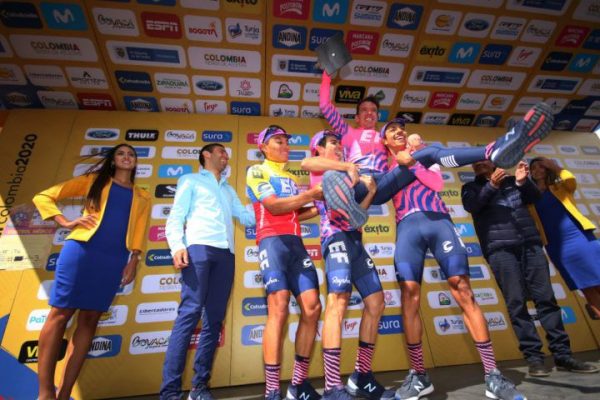
Several teams have posted press releases about their current status, and/or outlook on the 2020 season. For example, the Groupama-FDJ website hosts an interview with team manager Marc Madiot about the canceled races so far. Team EF Pro Cycling has an interesting photo-driven blog of Lachlan Morton and Alex Howes who were headed to the now-canceled Cape Epic. A few others have interviews with popular riders about the rescheduling of the Olympics, or other COVID-19 related changes to the sport.
But as of the past weekend, only three WorldTeams – NTT Cycling, Israel Start-Up Nation, and Mitchelton-Scott – actually have anything on their websites regarding new activities – virtual races, new events with the team open to the public. The Israel-based team quickly started their own Zwift virtual ride, open to fans from all over the world, to help spread the “STAY AT HOME” message as part of the global fight against the coronavirus. Mitchelton-Scott announced a plan to pay homage to canceled races as they launched “BikeExchange – Where the World Rides Series.” NTT Cycling head Doug Ryder said, “To protect ourselves and to stay relevant we are focused on doing internal team building for our partners.” U.S.-based Rally Cycling launched an interactive series of at-home, social media-based fitness challenges, designed to build community spirit as more and more areas within its healthcare market began locking down.
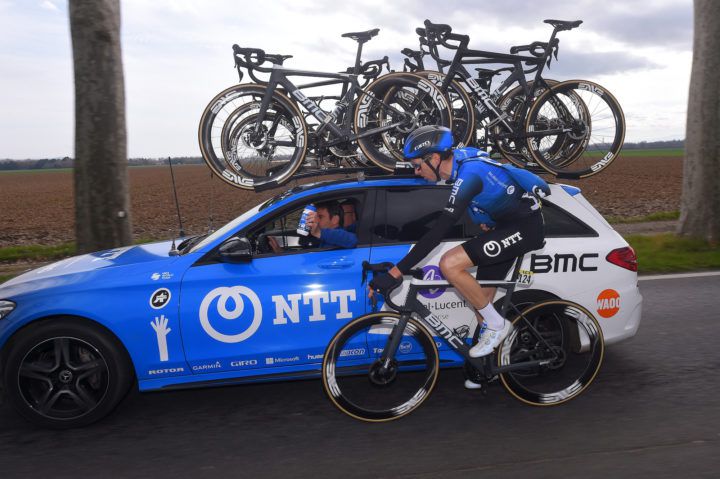
This is one of the most critical moments in the sport’s history, and the teams must innovate and diversify. All sports are facing severe economic challenges at the moment, but cycling’s historically weak sponsorship business model leaves it poorly positioned to generate revenues when the content is thin – no racing to broadcast, no public events to bring teams and fans together.
No one is certain how long the current crisis will last; indeed, at this point, we don’t even really know how many teams will ultimately survive. But a public and productive discussion about the spectrum of potential outreach and engagement options might help teams think outside of the box, and provide an opportunity to unify the sport. To assist in starting a discussion about what teams can do to stay engaged and relevant during this crisis, The Outer Line throws out a number of ideas below….
Rider, Fan and Sponsorship Engagement Ideas for Pro Cycling Teams:
- Use easily and cheaply produced digital content to connect with fans:
- Professional cycling is a rich ground for creating an on-the-go style of digital content that lets fans learn more about the day-to-day habits of the riders.
- Simple and quickly produced videos have made superstars out of “vloggers. ” That format could be used to give fans a behind-the-scenes look at the ways in which the riders are continuing to train and fuel during this break in racing.
- For example, Rally Cycling is already having riders produce short, simple videos on their Instagram accounts as part of a “Healthy Habits Challenge” on the team’s website.
- This content can be very simple, yet it can materially affect fans’ daily habits for the better and build a valuable sense of community between fans/followers and riders.
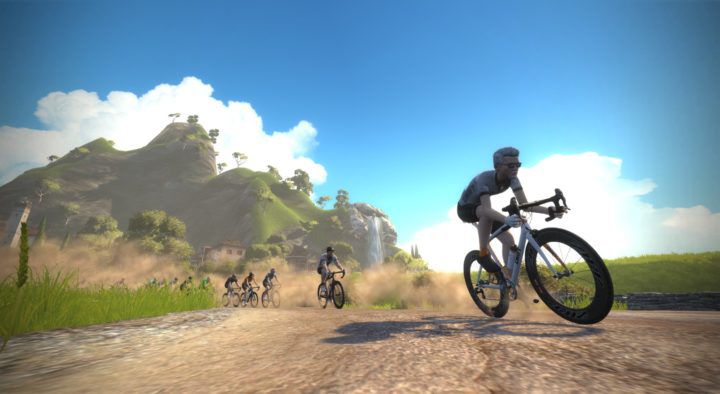
- Host shared training events on Zwift:
- Teams could offer virtual training events and even longer form “training camps” for Zwift users (there are a few different virtual riding platforms, but Zwift is the most popular option at the moment, and allows teams access to the highest possible number of users).
- This could allow teams to collect valuable fan emails, allowing them to market directly to fans in the future.
- These virtual training camps could be expanded in the future into revenue-driving destination events
- The EF Pro Cycling team is hosting online training sessions for fans with their pro riders as hosts, and Rapha has begun to move its rides online, and using their sponsored racers as ride leaders. NTT Pro Cycling has been hosting group rides on Zwift, and Israel Cycling Academy hosted a virtual training event last weekend to help supply N95 masks for medical teams fighting COVID-19. The event had over 1,500 participating fans signed up for the event a few minutes prior to the start.
- Have riders participate in spin classes on other platforms, like Peloton:
- Zwift is the popular virtual riding platform for those already familiar with the sport of road cycling, while others, like Peloton, are more popular with those just looking for a good workout. If riders and teams have access to a Peloton bike, they could raise the profile of the sport and their own brands with the less familiar indoor-only cyclist group.
- By putting up massive power numbers in these online competitive classes, they will be sure to drive a sizable amount of curiosity and interest with the other participants.
- The Peloton user base is a natural platform for driving new fans to the sport and giving sponsors exposure to a relatively wealthy audience.
- Partner with sponsors to add value in simple, yet innovative ways:
- Even without an active racing calendar, there is still a big role for cycling teams to play in motivating the sponsors’ stuck-at-home workforce to stay active and physically/mentally healthy, through the creation of virtual daily group workouts, fitness Q&As, or even social happy hours.
- For example, a team like Jumbo-Visma could have riders in self-isolation document themselves using the brand’s home grocery delivery service on social media to show fans the ease and superiority of their sponsor’s product. Or, this could be expanded to virtual group cooking sessions with fans of the team.
- Certain sponsors like EF Pro Cycling are seeing massive business interruptions due to the travel-based nature of their core business. These sponsors could partner with their cycling teams to test and even launch new products. For example, EF Pro Cycling could have the team use online tools for team meetings, race breakdowns and course previews during this isolation downtime to show how a virtual learning experience can be a productive way to learn. If these are successful, they could add this to their sales portfolio as a way for students to learn a language, or more about the cultural norms of the country in which they plan to study.
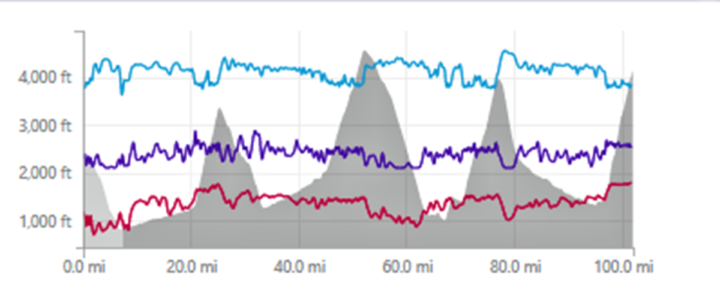
A look at Kuss’s power data from stage 15 of the Vuelta a España. Photo: Strava
- Share the teams training plans and rider data with participating fans:
- Just as the U.S. banking system is pulling out all stops combat COVID-19, cycling needs to release the “nuclear” option; rider training- and race power and heart rate data. Teams and racers have resisted this for years, but this type of information really grabs fans’ attention and would allow them to attempt to engage in the same training formats.
- With few real-world racing events left on the schedule, there is little to lose for teams and riders to share this data with fans. The sharing of this training and virtual performance data could always be throttled back in the future, to hide the fitness status of key riders. However, if the real-time race data proved to be a popular way for fans to interact with the races, perhaps this experiment could show teams and riders there is little to gain by looking at a rival’s power data in real-time during a race.
- Migrate the most popular portions of the race calendar to the virtual riding platform Zwift:
- Recreate your sponsor-correct jersey’s in the Zwift ecosystem.
- Get your real-life riders signed up for Zwift, and registered on your virtual team.
- Create events like virtual Tour of Flanders and Giro d’Italia on Zwift, with as many of the WorldTeam riders as possible. These races would be slightly longer than current Zwift races to reflect the grueling nature they possess in real life. This increased length and difficulty would allow some of the cream to rise to the top, and weed out those who only participate in shorter race formats.
- Teams could also create tiers for riders of different capabilities – like “pros vs. joes,” girls vs. boys, or juniors – to try to make the events as inclusive as possible.
- Stream these races online to allow fans to watch, and even let enthusiasts race alongside the pros.
- Fitness is cumulative, and if the entire 2020 calendar is completely canceled, riders will have to train in some fashion through the lost year to build into the 2021 season. These virtual events would give riders the chance to perform long sessions indoors while connecting with fans and providing valuable exposure for team sponsors, who are still paying top dollar for impressions.
- This could keep both riders motivated in some fashion and keep fans from drifting away from the sport during an unprecedented break in racing.
- Allowing fans to race actually provides a more compelling and intimate fan-engagement setting and allows them to get “skin in the game,” which will only deepen their connection to the teams, riders, and sporting ecosystem.
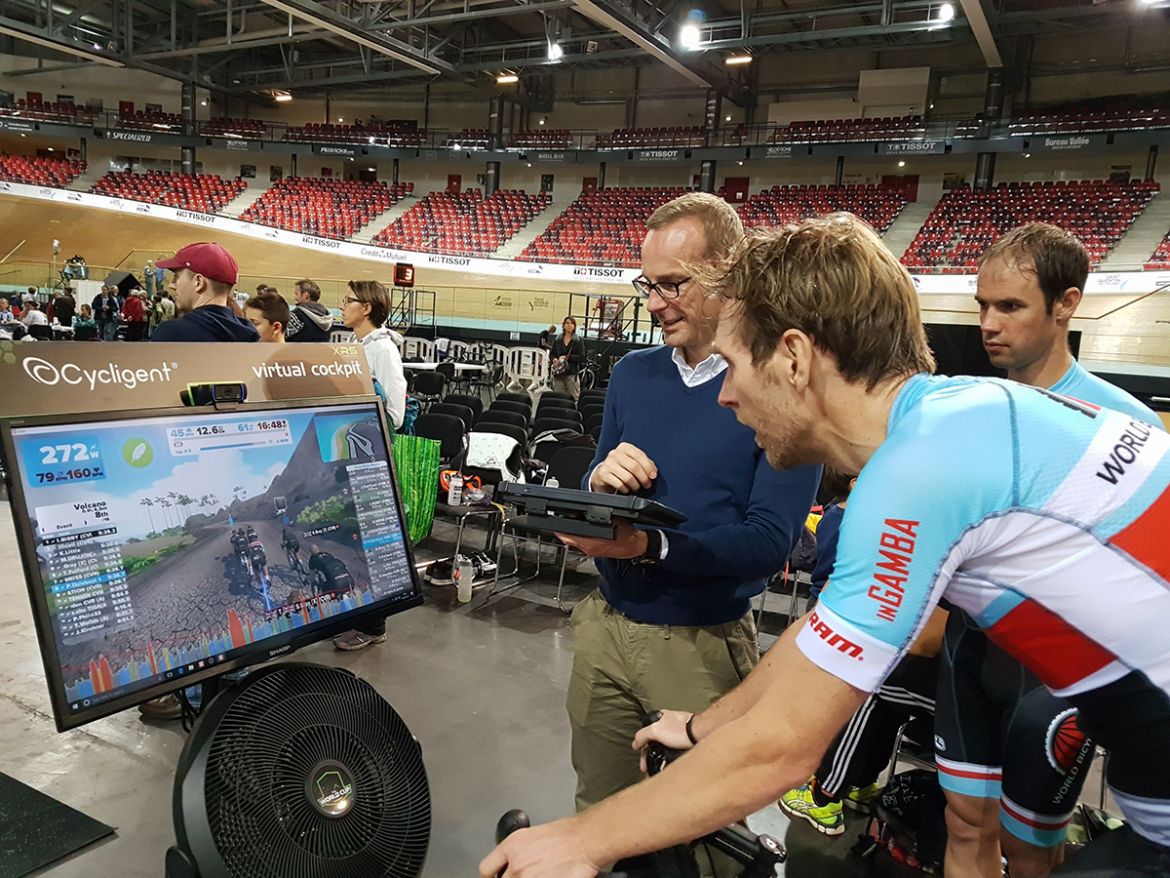
- A team potentially could offer some type of premium access to allow subscribers to sit in on a strategy session, or get into a WhatsApp group with the directors for these races.
- This level of virtual engagement is currently happening in NASCAR, and is genuinely quality entertainment. It is fascinating to watch the pro’s race with their $40,000 in-home simulators against the top e-racers with steering wheels attached to their laptops.
- Velon and the Tour de Suisse have recently announced their intention to host a five-stage race on Rouvy, an upstart cycling simulation platform. Any action should be applauded, but it would be more effective if it were a platform with a higher number of users and had representation from every WorldTeam squad. Splintered efforts and unaligned interests haven’t served the sport well in the past, and will continue to hurt it through these trying times unless everyone works together.
- Partner with production companies to make compelling documentary video series:
- Professional sports leagues like the NFL have had immense success using compelling behind-the-scenes docu-series like HBO’s “Hard Knocks“ and Amazon’s “All or Nothing” which use compelling individual and team stories inside the sport to drive new fandom.
- While this has been used by professional cycling sparingly in the past, most cycling team documentaries are produced by the team, which can cause the product to be overly glossy and avoid touchy subjects, or be very specialized – making them appealing only to viewers who are already fans of the sport.
- An excellent example of this is Netflix’s just-released series The Least Expected Day about the 2019 Team Movistar season. It is well-produced, pulls few punches while touching on intra-team conflict, and is compelling enough from a human interest perspective to appeal to a wide audience, who may not yet be familiar with professional road cycling. Existing — as well as potential — cycling fans eat up this kind of content.
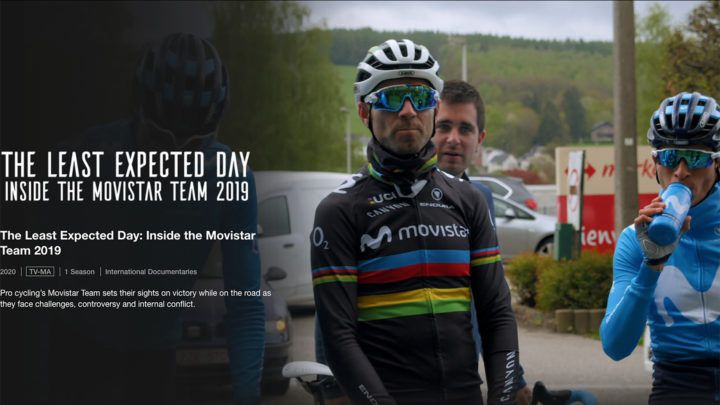
The Least Expected Day documents Movistar Team’s 2019 season. - Another example: the startup 3-on-3 basketball league, the BIG3, has joined forces with Endemol — producers of popular reality shows like “Big Brother” and “Biggest Loser” — to create a hybrid reality show and preseason tournament, starring 16 quarantined players who live together under quarantine while playing live-streamed competitive basketball games. If the 2020 Tour de France goes on as planned, the participating riders will likely have to quarantine together two weeks prior to the race and a compelling documentary series could potentially be created following these riders as they prepare for the race in such unusual circumstances.
- Create a draft for the top 100 participating fans in the virtual recreated season:
- Each team would pick a rider of their choosing, one at a time, in reverse order of their standings in the virtual season.
- The drafted riders will attend the team’s official training camp and undergo a series of challenges and interviews to decide if they could potentially join the team for the upcoming season. While the teams would be under no obligation to hire any of these riders, it could serve as compelling content and unearth some “diamond in the rough” talents that wouldn’t otherwise have an opportunity.
- This would serve as content for an ongoing steaming documentary series and would chronicle these riders and their goal of making the team.
- Discovery Channel ran a similar season-long competition, in 2005 or 2006, a kind of reality competition “to replace Lance” after his initial retirement.
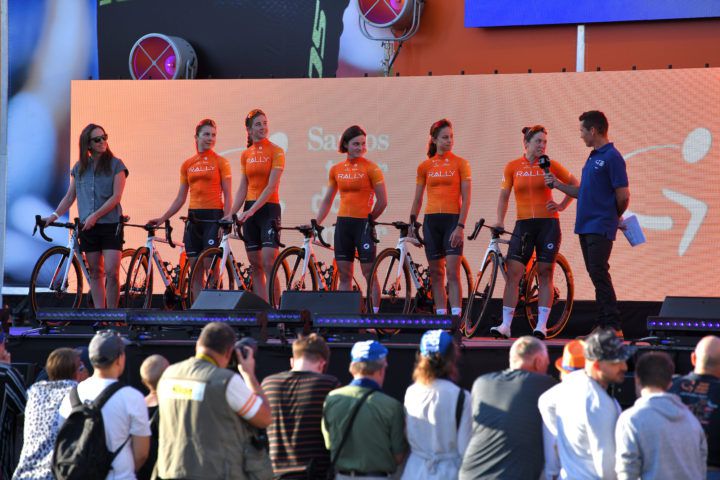
We assume that all teams are diligently working on similar initiatives or ideas on a real-time basis, so as to stay relevant and engaging. Hopefully there will be many other bright ideas and initiatives. Some of these might work for some teams, but not for others. But what’s important is for all the teams to pull together – to gain collective strength from this time of crisis, to make the sport a more vital and engaging place to both existing and new fans, and to continue delivering value to their all-important sponsors.


